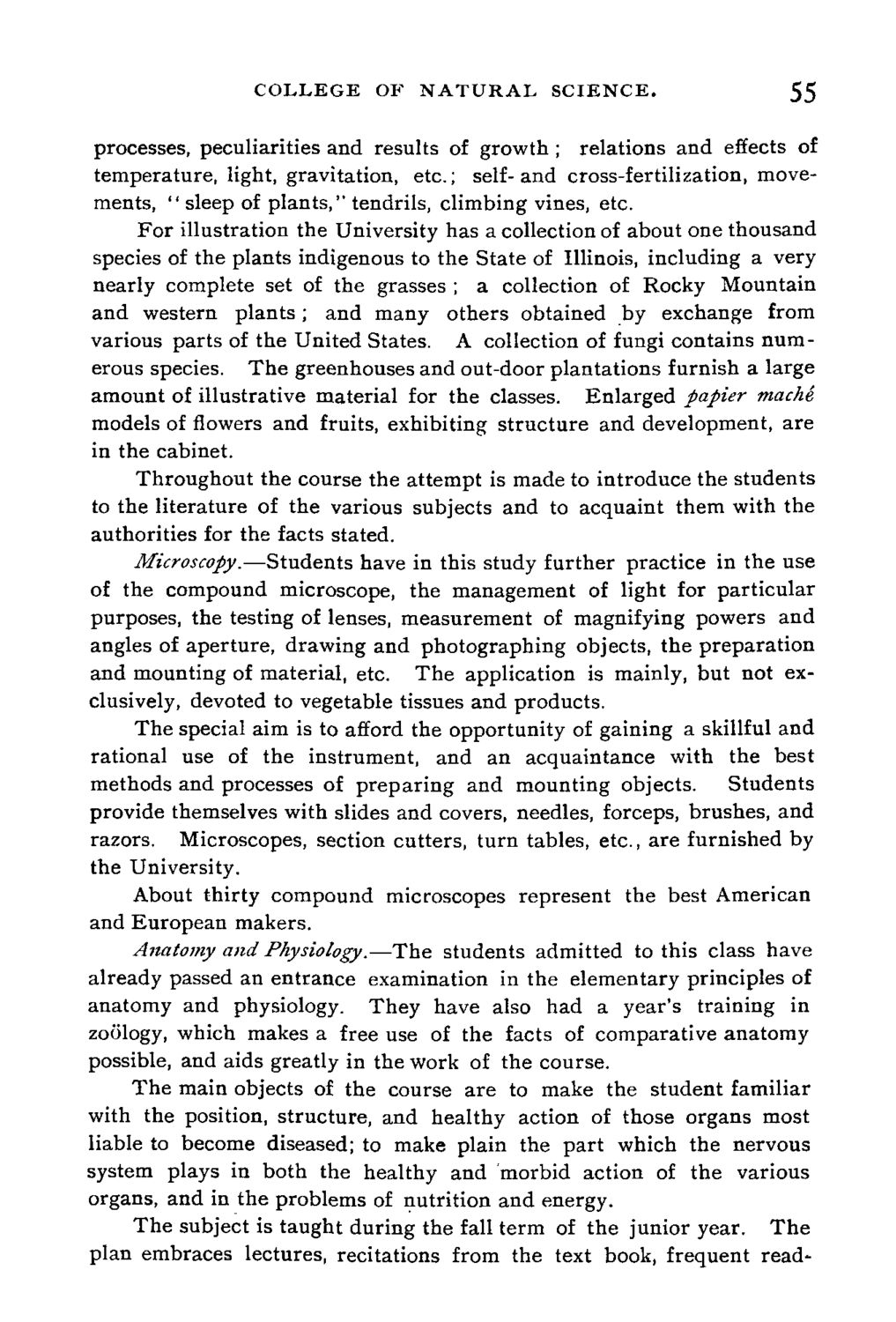| |
| |
Caption: Course Catalog - 1890-1891
This is a reduced-resolution page image for fast online browsing.

EXTRACTED TEXT FROM PAGE:
COLLEGE OF NATURAL SCIENCE. 55 processes, peculiarities and results of growth ; relations and effects of temperature, light, gravitation, etc.; self-and cross-fertilization, movements, " sleep of plants," tendrils, climbing vines, etc. For illustration the University has a collection of about one thousand species of the plants indigenous to the State of Illinois, including a very nearly complete set of the grasses ; a collection of Rocky Mountain and western plants; and many others obtained by exchange from various parts of the United States. A collection of fungi contains numerous species. The greenhouses and out-door plantations furnish a large amount of illustrative material for the classes. Enlarged papier mache models of flowers and fruits, exhibiting structure and development, are in the cabinet. Throughout the course the attempt is made to introduce the students to the literature of the various subjects and to acquaint them with the authorities for the facts stated. Microscopy.—Students have in this study further practice in the use of the compound microscope, the management of light for particular purposes, the testing of lenses, measurement of magnifying powers and angles of aperture, drawing and photographing objects, the preparation and mounting of material, etc. The application is mainly, but not exclusively, devoted to vegetable tissues and products. The special aim is to afford the opportunity of gaining a skillful and rational use of the instrument, and an acquaintance with the best methods and processes of preparing and mounting objects. Students provide themselves with slides and covers, needles, forceps, brushes, and razors. Microscopes, section cutters, turn tables, etc., are furnished by the University. About thirty compound microscopes represent the best American and European makers. Anatomy and Physiology.—The students admitted to this class have already passed an entrance examination in the elementary principles of anatomy and physiology. They have also had a year's training in zoology, which makes a free use of the facts of comparative anatomy possible, and aids greatly in the work of the course. The main objects of the course are to make the student familiar with the position, structure, and healthy action of those organs most liable to become diseased; to make plain the part which the nervous system plays in both the healthy and morbid action of the various organs, and in the problems of nutrition and energy. The subject is taught during the fall term of the junior year. The plan embraces lectures, recitations from the text book, frequent read-
| |